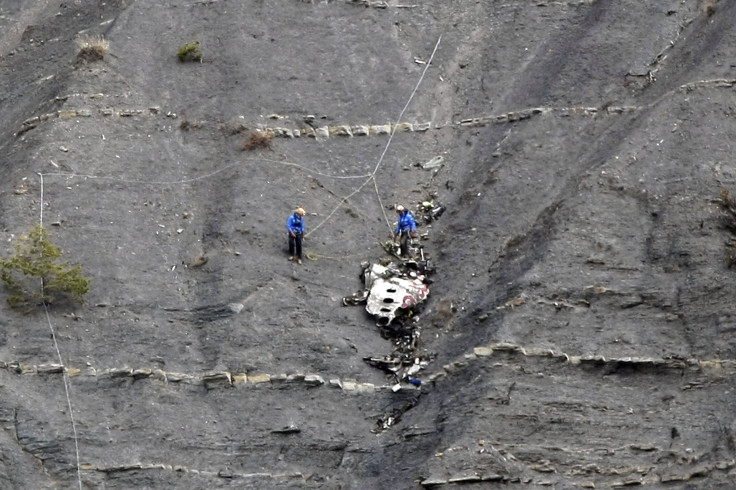Germanwings Flight 9525 Pilot Patrick Sondenheimer Flew With Airline To Spend More Time With Family: Report

The captain of Germanwings Flight 9525, which crashed into the French Alps last week, worked for the budget airline because the job gave him a chance to fly shorter routes, allowing him to spend more time with his family, a report said.
Patrick Sondenheimer, who investigators have determined was locked out of the cockpit by co-pilot Andreas Lubitz prior to the crash, was previously a pilot for Germanwings parent company Lufthansa Group, for which he flew long-distance flights, the Independent reported. Sondenheimer, who was the father of a 3-year-old son and 6-year-old daughter, died along with 149 other people on board when Lubitz intentionally crashed the plane, a French prosecutor said.
Sondenheimer banged on the cockpit door while pleading "For God's sake, open the door!" approximately 13 minutes prior to the fatal crash, audio recovered from the plane’s "black box" recorder indicated.
"He was someone very reliable," an unidentified former colleague of Sondenheimer told Europe 1. "He was one of the best pilots we had."
Lubitz apparently suffered from a psychosomatic illness and depression, among other mental ailments, and was on antidepressants when the crash occurred. He also was seeking medical treatment for issues that affected his vision, and he hid both conditions from the Lufthansa Group.
The crash has spurred a flurry of new regulations for airplane cockpits across a number of countries, with Australia announcing Monday that all commercial flights operating there must have at least two crew members inside at all times. Other airlines in Europe and North America last week announced similar changes to their cockpit occupancy policies.
However, it is unclear how effective these updated regulations will be when it comes to preventing what has come to be known as pilot suicide. “Adopting this rule is the most immediate thing airlines can do. It’s relatively easy and doesn’t cost anything,” Bill Waldock, a professor of aviation safety science at Embry-Riddle Aeronautical University, told International Business Times in a previous interview. “It does cut down on the risk because you have somebody else in the cockpit who can open the door. But if you have someone committed to taking a plane down, it might not be effective as you’d like it to be.”
© Copyright IBTimes 2024. All rights reserved.












